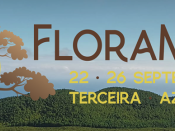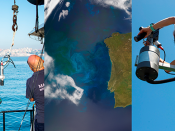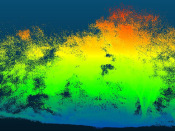Por Roberto A. Keller (NHS cE3c & MUHNAC).
Explanations for the ecological dominance of ants generally focus on the benefits of sociality (division of labour and cooperation during foraging). However, the principal innovation of ants relative to their wasp ancestors was the evolution of a new phenotype: a wingless worker caste optimized for ground labour. Ant workers are famous for their ability to lift and carry heavy loads, but we know surprisingly little about the anatomical basis of their strength. Using X-ray microcomputed tomography and 3D imaging my colleagues and I analyzed the skeletomuscular system of the ant thorax to understand the morphological consequences of the loss of flight in workers relative to typical winged insects. We determined that wingless workers are characterized by five major changes to their thoracic structure: i) fusion of the articulated flight thorax (queens) into a rigid box optimized to support the muscles that operate the head, legs and abdomen, ii) redesign of internal cuticular structures for better bracing and muscle attachment, iii) substantial enlargement of the neck muscles for suspending and moving the head, iv) lengthening of the external trochanter muscles, predominant for the leg actions that lift the body off the ground, v) modified angle of posterior muscles that are key for flexion of the abdomen. Thus rather than simply a subtraction of costly flight muscles, the ant worker thorax evolved into a power core underlying stronger mandibles, legs, and sting. This contrasts with solitary flightless insects where the lack of central place foraging generated distinct selective pressures for rearranging the thorax. Stronger emphasis is needed on morphological innovations of social insects to further our understanding of the evolution of social behaviours.
Transmissão em direto no canal de YouTube do cE3c.























